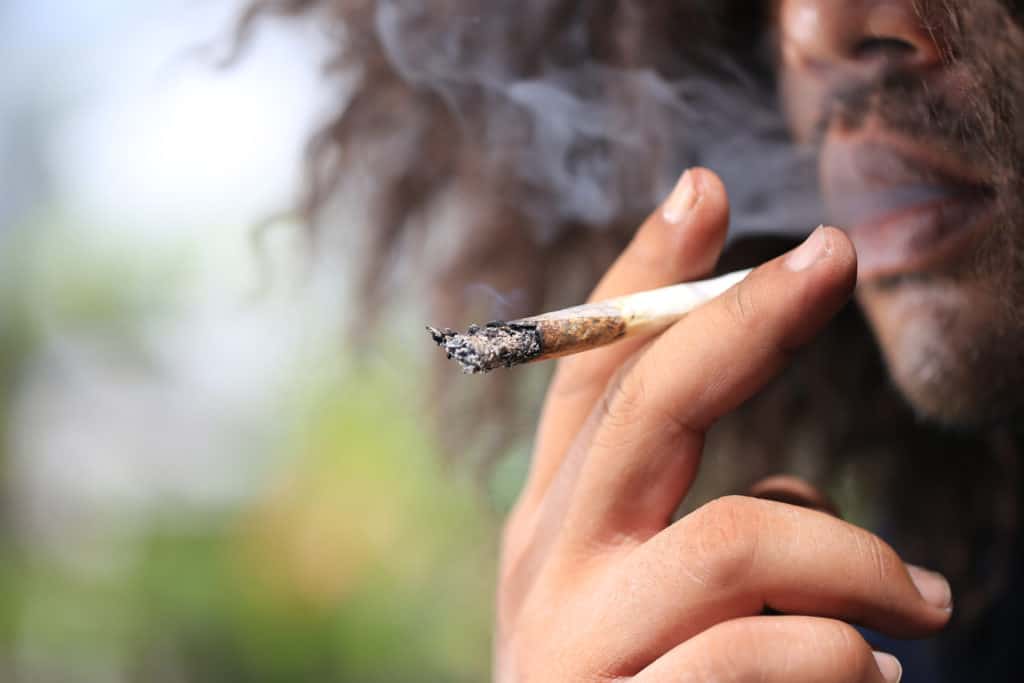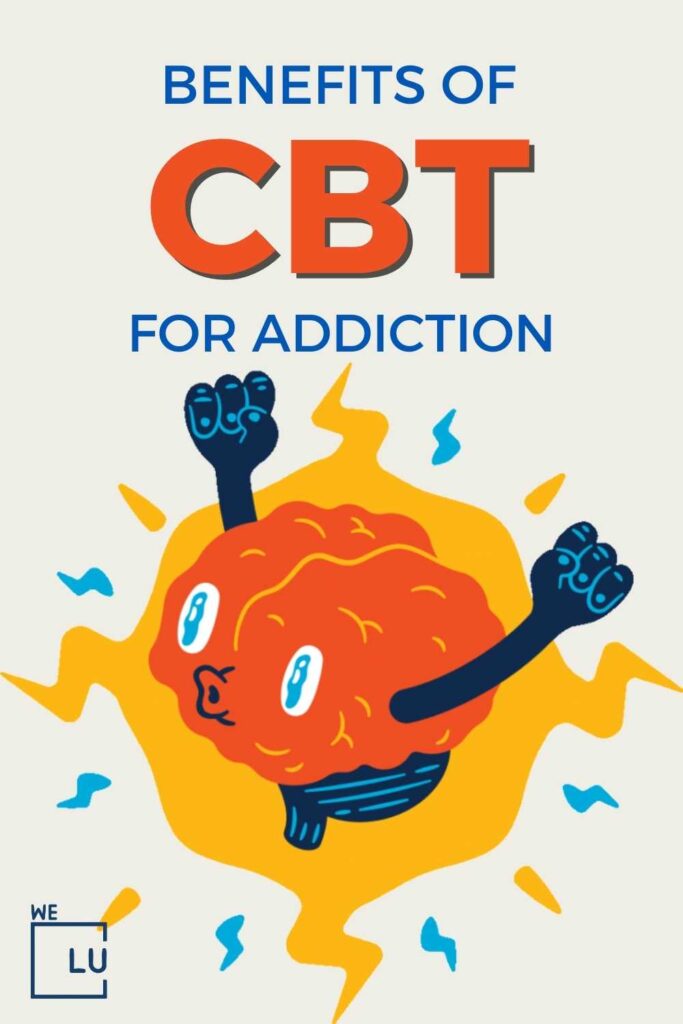How Long Does THC Stay In Your Hair?
THC in hair can be detected for an extended period compared to other forms of drug testing. When consumed, THC metabolizes into various compounds, including THC-COOH, stored in hair follicles. Hair drug tests can detect the presence of THC and its metabolites, providing a historical record of drug use.
On average, THC can be detected in hair for up to 90 days after use, although individual factors such as hair growth rate, hair color, and drug usage frequency can affect this timeline. It’s important to note that while THC may be eliminated from the body relatively quickly, the metabolites remain trapped in the hair shaft.
Hair drug tests typically analyze a 1.5-inch segment of hair closest to the scalp, corresponding to approximately 90 days of growth. This means that even if you’ve stopped using cannabis, traces of THC can still be detected during this timeframe.
It’s worth mentioning that specific hair treatments, such as dyeing or bleaching, do not eliminate or alter the presence of THC in the hair. These methods may affect external contaminants but won’t impact the drug metabolites embedded within the hair shaft.
While various detox products and methods claim to cleanse THC from the hair, their effectiveness is often debated. Some methods involve using specialized shampoos or detoxification kits to strip away or mask drug metabolites. However, there is limited scientific evidence to support their reliability.
To minimize the presence of THC in your hair, the most reliable approach is to abstain from cannabis use altogether. Over time, as new hair growth replaces the old, the THC metabolites will gradually diminish. Trimming or shaving off the hair may reduce the detection window, but it’s important to remember that tampering with hair samples for drug tests can have serious consequences.
If you are facing a hair drug test and need to remove THC traces quickly, it’s advisable to consult with a medical professional or a drug testing expert. They can provide personalized guidance and discuss options for your situation.
Staying informed about the drug testing policies in your jurisdiction and workplace is crucial to make informed decisions regarding cannabis use and detoxification programs.
What Is A THC Hair Test?
A THC hair test, also known as a hair follicle drug test, screens for THC (tetrahydrocannabinol) and its metabolites in the hair shaft. Unlike other drug tests, such as urine or blood tests, which detect recent drug use, a hair test provides a historical record of drug consumption.
During a THC hair test, a small sample of hair is collected from the individual being tested, usually from the scalp. The standard hair length required is about 1.5 inches, corresponding to approximately 90 days of growth. Sometimes, body hair can be used if head hair is unavailable.
The collected hair sample is then sent to a laboratory for analysis. In the laboratory, the hair is washed to remove external contaminants and then subjected to various testing methods, such as enzyme-linked immunosorbent assay (ELISA) or gas chromatography-mass spectrometry (GC-MS), to detect the presence of THC and its metabolites.
The THC hair test is susceptible and can detect even small amounts of THC-COOH (a metabolite of THC) embedded in the hair shaft. This makes it difficult to manipulate or tamper with the test results.
It’s important to note that a hair test does not determine current impairment or intoxication but instead provides information about past drug use. The test is commonly used by employers, law enforcement agencies, and other organizations that require a comprehensive overview of an individual’s drug history.
The results of a THC hair test are typically reported as positive or negative, indicating whether THC or its metabolites were detected above a specific cutoff level. The detection window for THC in hair is longer than other drug testing methods, making it a preferred option when evaluating long-term drug use.
Understanding the regulations and policies regarding THC hair tests in your jurisdiction or workplace is essential to ensure compliance and make informed decisions regarding cannabis use and employment requirements.

Skip To:
Learn More:
- How To Stop Smoking Weed Cold Turkey? Dangers & Effects
- How to Sober Up On Weed?
- Xanax and Weed, Is it Safe to Mix Them?
- How to Flush Weed Out of Your System?
- How Long Does A High Last? Weed High & Substance Abuse
- How Long Do Weed Highs Last? Cannabis Effects, Use & Abuse
- Why Do They Call Weed Loud?
- Weed Edibles And How To Get Started With Addiction Treatment
- Dabbing Weed
Get Help. Get Better. Get Your Life Back.
Searching for Accredited Drug and Alcohol Rehab Centers Near You?
Even if you have failed previously and relapsed, or are in the middle of a difficult crisis, we stand ready to support you. Our trusted behavioral health specialists will not give up on you. When you feel ready or just want someone to speak to about therapy alternatives to change your life call us. Even if we cannot assist you, we will lead you to wherever you can get support. There is no obligation. Call our hotline today.
(844) 597-1011How Long Does THC Stay In Your Hair? Popular FAQs
-
How Long Does THC Stay In Hair Follicles?
THC (tetrahydrocannabinol) can remain detectable in hair follicles for an extended period compared to other forms of drug testing. THC can be detected in hair for up to 90 days after use. However, the detection window can influence factors such as hair growth rate, hair color, and drug usage frequency.
-
Why Is THC In Hair?
When THC is consumed, it undergoes metabolism in the body, and its metabolites, including THC-COOH, are circulated through the bloodstream. These metabolites can be deposited into the hair follicles through the blood vessels that nourish the hair root. As the hair grows, the drug metabolites become trapped within the hair shaft, leading to their presence in the hair.
THC Factsheet
What is THC?
THC (tetrahydrocannabinol) is the primary psychoactive compound found in cannabis plants. It is responsible for the mind-altering effects commonly associated with marijuana use. THC interacts with receptors in the brain and central nervous system, producing a range of effects, including euphoria, relaxation, altered perception of time, and increased appetite. It is one of the most well-known and studied cannabinoids found in cannabis and is the main target of drug testing for cannabis use.
THC Side Effects
- Euphoria: THC can induce happiness, relaxation, and overall euphoria.
- Altered perception: THC can distort sensory perception, leading to changes in perception of time, space, and sensory experiences.
- Increased heart rate: THC can cause a temporary increase in heart rate, known as tachycardia. This effect may be more pronounced in individuals with pre-existing cardiovascular conditions.
- Dry mouth and red eyes: THC can cause dryness of the mouth, commonly referred to as “cottonmouth,” and redness of the eyes.
- Impaired coordination and motor skills: THC can affect coordination, balance, and motor skills, leading to reduced reaction times and impaired performance in tasks that require fine motor control.
- Memory and cognitive effects: THC may impair short-term memory and cognitive function, affecting attention, concentration, and the ability to form new memories.
- Anxiety and paranoia: In some individuals, THC can induce anxiety, paranoia, or heightened self-consciousness. Higher doses or sensitivity to THC may increase the likelihood of experiencing these effects.
- Increased appetite: Often called the “munchies,” THC can stimulate appetite and increase food cravings.
- Bloodshot eyes: THC can cause blood vessels in the eyes to dilate, resulting in redness and bloodshot eyes.
Signs of THC Addiction
- Compulsive use: Individuals may find it difficult to control or limit their cannabis use, often engaging in it more frequently or in more significant amounts than intended.
- Cravings and withdrawal symptoms: When attempting to reduce or quit cannabis use, individuals may experience intense cravings for THC. They may also encounter withdrawal symptoms such as irritability, restlessness, anxiety, insomnia, decreased appetite, and mood swings.
- Tolerance development: Over time, regular THC use can lead to tolerance, requiring higher doses to achieve the desired effects. This can indicate the body’s adaptation to the presence of THC.
- Neglected responsibilities: A person struggling with THC addiction may start neglecting their responsibilities at work, school, or home. They may experience declining academic or job performance and lack interest in activities they previously enjoyed.
- Continued use despite negative consequences: Despite experiencing negative consequences related to THC use, such as relationship problems, legal issues, or deteriorating physical or mental health, an individual may persist in using cannabis.
- Preoccupation with obtaining and using THC: An individual may spend a significant amount of time thinking about obtaining or using cannabis, which can disrupt their daily life and activities.
- Loss of interest in other activities: As THC addiction progresses, people may lose interest in activities they previously enjoyed, prioritizing cannabis use over social, occupational, or recreational pursuits.
- Failed attempts to quit or cut back: Despite trying to quit or reduce cannabis use, an individual struggling with THC addiction may find it challenging to maintain abstinence or moderate their consumption.
- Social isolation: An individual’s THC addiction may lead to social withdrawal, distancing themselves from friends, family, or social activities favoring cannabis use.
- Psychological and physical dependence: Continued use of THC can lead to psychological dependence, where the individual feels they need cannabis to function normally. Additionally, some individuals may experience physical dependence, characterized by withdrawal symptoms when attempting to quit or reduce cannabis use.
Weed Addiction Statistics
Marijuana, also called weed, is a substance obtained from the cannabis plant for THC-induced effects. Weed is the most widely used illegal substance in the US, according to the National Institute on Drug Addiction (NIDA).
17.5%
Among those 12 and older, marijuana consumption increased from 11% to 17.5%.
Source: NIDA
55 Million
The number of American adults who currently use marijuana.
Source: NIDA
24%
The percentage of 12th-graders who have used marijuana in the past year.
Source: NIDA

Get Your Life Back
Find Hope & Recovery. Get Safe Comfortable Detox, Addiction Rehab & Dual Diagnosis High-Quality Care.
Hotline(844) 597-1011
What Is Considered A High THC Level In Hair Test?
The threshold for a high THC level in a hair test can vary depending on the specific testing laboratory or organization setting the cutoff level. Generally, a high THC level in a hair test is determined by the amount of THC metabolites (such as THC-COOH) detected in the hair sample.
Commonly used cutoff levels for THC in hair tests range from 0.1 ng/mg (nanograms per milligram) to 1 ng/mg. Suppose the concentration of THC metabolites in the hair sample exceeds the specified cutoff level. In that case, it is considered a positive result, indicating a significant amount of THC in the individual’s system.
Hair tests are susceptible and can detect even small amounts of THC metabolites, so a positive result does not necessarily mean recent or current cannabis use. Instead, it indicates that the individual has used cannabis within the detection window, typically up to 90 days.
The specific cutoff level used in a hair test can depend on various factors, including the jurisdiction, industry standards, and the purpose of the test (employment screening, legal proceedings, etc.). It’s recommended to check the guidelines or policies of the specific testing entity or consult a medical professional or drug testing expert for accurate and up-to-date information on the THC cutoff levels used in hair tests.
First-class Facilities & Amenities
World-class High-Quality Addiction & Mental Health Rehabilitation Treatment
Rehab Centers TourRenowned Addiction Centers. Serene Private Facilities. Inpatient rehab programs vary.
Addiction Helpline(844) 597-1011Proven recovery success experience, backed by a Team w/ History of:
15+
Years of Unified Experience
100s
5-Star Reviews Across Our Centers
10K
Recovery Success Stories Across Our Network
- Low Patient to Therapist Ratio
- Onsite Medical Detox Center
- Comprehensive Dual-Diagnosis Treatment
- Complimentary Family & Alumni Programs
- Coaching, Recovery & Personal Development Events
How To Get THC Out Of Hair? Enroll In The We Level Up Weed Detox Program
A weed detox program is a systematic approach aimed at eliminating or reducing the presence of THC (tetrahydrocannabinol) and its metabolites in the body.
While no foolproof method exists to remove THC from the system, detox programs generally focus on supporting the body’s natural detoxification processes and promoting overall wellness. Here are some standard components and strategies often incorporated into a weed detox program:
- Abstinence: The most crucial aspect of a weed detox program is refraining from further cannabis use. This allows the body to metabolize and eliminate THC and its metabolites.
- Hydration: Drinking plenty of water and staying well-hydrated can aid in flushing out toxins, including THC metabolites, through urine and sweat. However, excessive water consumption should be avoided to prevent any health risks.
- Exercise: Regular physical activity, such as cardiovascular exercises or strength training, can help accelerate the metabolism and eliminate THC from the body. Exercise promotes sweating and increases blood circulation, which may assist in removing toxins.
- Balanced diet: Consuming a healthy, well-balanced diet rich in fruits, vegetables, whole grains, and lean proteins can support overall detoxification processes. Antioxidant-rich foods like berries and leafy greens may provide additional benefits.

- Supportive supplements: Some individuals may opt to use certain supplements or herbal remedies claimed to support detoxification. However, consulting with a healthcare professional before taking any supplements is essential to ensure they are safe and appropriate for your situation.
- Time: THC is gradually eliminated from the body as it metabolizes and exits through urine, sweat, and feces. Depending on the frequency and amount of cannabis use, THC metabolites can take several days to several weeks to become undetectable.
The effectiveness of weed detox programs can vary among individuals, and no method can guarantee immediate or complete removal of THC from the body. Additionally, commercial detox products claiming to expedite the detoxification process may not have sufficient scientific evidence to support their efficacy.
Suppose you require assistance or have specific concerns regarding a weed detox program. In that case, it is advisable to consult with a healthcare professional or a substance abuse specialist who can provide personalized guidance and support based on your unique circumstances.
World-class, Accredited, 5-Star Reviewed, Effective Addiction & Mental Health Programs. Complete Behavioral Health Inpatient Rehab, Detox plus Co-occuring Disorders Therapy.
CALL(844) 597-1011End the Addiction Pain. End the Emotional Rollercoaster. Get Your Life Back. Start Drug, Alcohol & Dual Diagnosis Mental Health Treatment Now. Get Free No-obligation Guidance by Substance Abuse Specialists Who Understand Addiction & Mental Health Recovery & Know How to Help.
How Long Does THC Stay In Your Hair? We Level Up Dual Diagnosis Treatment
We Level Up is a highly respected rehabilitation center renowned for its comprehensive and holistic approach to assisting individuals facing addiction and co-occurring mental health challenges. The center embraces evidence-based therapies, expert medical care, and a well-rounded perspective to ensure a successful path to recovery. With a wide range of therapeutic techniques available, including individual counseling and group therapy, We Level Up aims to address the underlying causes of addiction and foster emotional growth.
Incorporating behavioral therapies, such as Cognitive Behavioral Therapy (CBT) and Dialectical Behavioral Therapy (DBT), equips individuals with valuable skills to manage cravings and handle triggers effectively. Furthermore, medication management may be implemented as part of personalized treatment plans to aid in withdrawal symptoms, stabilize mood, and manage any co-occurring conditions, all under the close supervision of a dedicated medical team.
Experience Transformative Recovery at We Level Up Treatment Centers.
See our authentic success stories. Get inspired. Get the help you deserve.
Start a New Life
Begin with a free call to an addiction & behavioral health treatment advisor. Learn more about our dual-diagnosis programs. The We Level Up Treatment Center Network delivers recovery programs that vary by each treatment facility. Call to learn more.
- Personalized Care
- Caring Accountable Staff
- World-class Amenities
- Licensed & Accredited
- Renowned w/ 100s 5-Star Reviews
We’ll Call You
How Long Does THC Stay In Your Hair? Video Script
Edibles are cannabis-infused food products, such as candies, baked goods, salad dressings, beef jerky, and more. They offer a gentler and longer-lasting high that can persist for several hours. These days, almost any food or beverage can be infused with edibles, CBD, or cannabis, providing a range of delicious and innovative treats.
Compared to other methods of THC administration, such as smoking or vaping, edibles offer a robust and prolonged effect after consumption, making them a popular choice among users.
How To Pass A Drug Test For Weed? Watch The Weed Addiction Informative Video
Search We Level Up How Long Does THC Stay In Your Hair? Resources
Sources
- Substance Abuse and Mental Health Services Administration (SAMHSA) – Treatment Locator: https://findtreatment.samhsa.gov/
- National Institute on Drug Abuse (NIDA) – DrugFacts: Marijuana: https://www.drugabuse.gov/publications/drugfacts/marijuana
- National Institute on Drug Abuse (NIDA) – Drug Testing: https://www.drugabuse.gov/drug-topics/drug-testing
- Centers for Disease Control and Prevention (CDC) – Marijuana and Public Health: https://www.cdc.gov/marijuana/index.htm
- National Institutes of Health (NIH) – National Library of Medicine: PubMed – THC and Hair Testing: https://pubmed.ncbi.nlm.nih.gov/?term=THC+hair+testing
- National Institute on Drug Abuse (NIDA) – Principles of Drug Addiction Treatment: A Research-Based Guide: https://www.drugabuse.gov/publications/principles-drug-addiction-treatment-research-based-guide-third-edition
- National Survey on Drug Use and Health (NSDUH) – Substance Use and Mental Health Reports: https://www.samhsa.gov/data/data-we-collect/nsduh-national-survey-drug-use-and-health
- U.S. Food and Drug Administration (FDA) – Marijuana and Cannabinoids: https://www.fda.gov/news-events/public-health-focus/fda-regulation-cannabis-and-cannabis-derived-products-including-cannabidiol-cbd
- Drug Enforcement Administration (DEA) – Drugs of Abuse: https://www.dea.gov/
- National Organization for the Reform of Marijuana Laws (NORML) – Hair Testing: https://norml.org/


